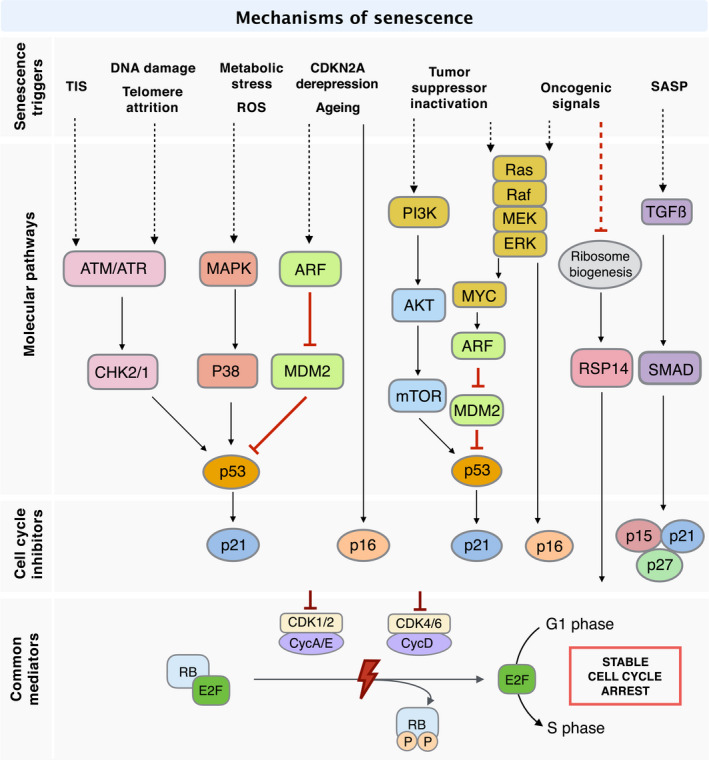Fig. 2.

Signalling pathways of senescence induction in cancer. DNA damage and telomere shortening activate a DNA damage response that imposes cell‐cycle arrest through the p53‐p21 axis while ARF and p16 upregulation due to ageing and CDKN2A de‐repression block cell‐cycle progression via both the p53‐p21 and p16 axis. ROS and metabolic alterations implement senescence through MAPK/p38 signalling whereas SASP reinforces senescence by means of TGFβ signalling. Inactivation of tumour suppressors not only induces the Ras/Raf/MEK signalling pathway as oncogenic signals, but also modulates the p53‐p21 axis via the PI3K/AKT/mTOR pathway. In addition to the conventional CKI‐dependent pathway, oncogenic signals trigger cell‐cycle withdrawal by downregulating ribosome biogenesis, thereby increasing RPS14 for direct inhibition of CDK/cyclin‐mediated RB phosphorylation. ATM, ataxia‐telangiectasia mutated; ATR, ATM‐ and Rad3‐related; CDK, cyclin‐dependent kinase; CHK, checkpoint kinase; MAPK, mitogen‐activated protein kinase; MEK, MAPK/ERK kinase; mTOR, mammalian target of rapamycin; PI3K, phosphatidylinositol 3‐kinase; RB, retinoblastoma protein; RPS14, ribosomal protein S14; TGFβ, transforming growth factor β.
